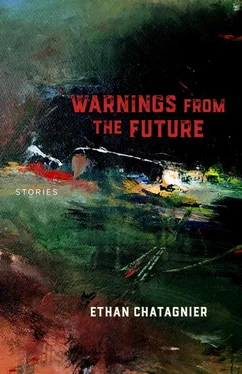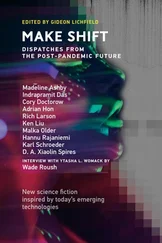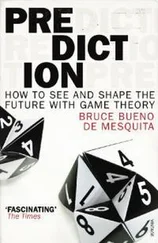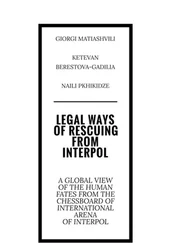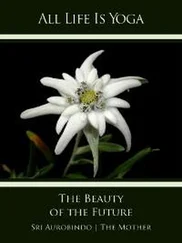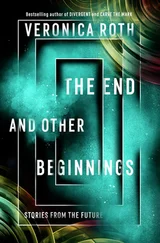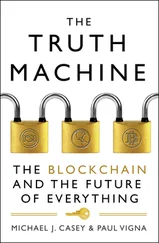“I’m offering you a fairly big job. Ten pumpkins, five across, two high. A real panorama of Boston: the skyline, Back Bay, the Hancock, the Pru, the Charles with maybe a sailboat or two. But a knockout job.”
“You realize Halloween is this Saturday?”
“Let’s be honest. I really want to kick Newburn’s ass.”
“You want to kick his ass… with art?”
“Art’s got to have some utility, right?”
“You know I charge five hundred for a pumpkin? Ten pumpkins is five thousand dollars.”
“Do I get some kind of bulk discount?”
I looked around at the rich accoutrements of his condominium and took another sip of his cognac. “No. Do you know anyone else who does this?”
He smiled. It was the answer he’d been looking for. I told him I’d draw up a contract, but that I’d need enough up front to cover the cost of the pumpkins themselves. He fished his wallet from his back pocket and handed me twenty-five hundred in cash. “Half now, half on delivery.” He noted that I’d seemed interested in the painting in his foyer and encouraged me to admire it for as long as I liked on my way out.
Like every Durant since 1996, it was a painting of a crowd, this one a Tokyo crosswalk at the end of the workday, thousands of identical black suits approaching each other and passing like the densest school of fish. It was painted from the perspective a few feet above, as if someone had stood on a ladder to view the scene, and the style was almost photorealistic—in fact, it appeared photorealistic from more than five feet away, and all the Durants we’d seen in class had seemed that way on the projection screen.
A fellow student had derided Durant as Where’s Waldo? for grown-ups, and the rest of the class, myself included, had lazily agreed. Professor Wei said we’d have to stand in front of one to understand, and he was right. From afar it looked simply like a picture of a crowd taken without any regard to composition, the entire canvas filled with people. “There’s no central focus, no subject ,” I’d said in class. But in the foyer, as I stepped closer, I saw that each face was a focal point, that everyone in that crowd, maybe two hundred people within the frame, had a unique expression. I first looked at a young man glowing with ambition. He’d done something praiseworthy in his office that day. Another owed money to a friend, and another was drunk already, leaving work. I went from face to face, gleaning their stories. Preoccupation, delight, every state of humanity perfectly rendered. Each visage could have been a painting in its own right. As Professor Wei had said, “Every face is in the crowd, but no face is the crowd.” No wonder a new canvas only hit the market every few years.
I walked through Beacon Hill back toward the T station, sure I was going to be robbed. I squeezed the lump of cash to make certain it didn’t slip out of my pocket somehow, fearful that if I took my hand out the wad of bills would come out with it and fall directly into a storm drain. Such are the puckish proportions a critical mass of hard money can take on to one underfamiliar with it.
Beacon Hill was beautiful, and it made me angry. It was postcard Boston, with rows of red-brick condominiums with quaint porches, strung in places with ivy, narrow cobbled streets, and little walkable alleys. I’d seen a news item the year before about a parking spot in Beacon Hill selling for a hundred and fifty thousand dollars. John Kerry had a house there, and Uma Thurman. Daniel Webster and Oliver Wendell Holmes Jr. had lived there. The people making art in this city did not: they lived in Jamaica Plain, Chinatown, Dorchester, Roxbury, and Somerville. Their apartments weren’t made of brick, and there was no hint of ivy. It wasn’t fair that everyone in the most beautiful part of the city was a moneymaker, that one had to buy his way in. The rest of my walk to the station, I thought of how different a world it would be if that Durant lived instead with whoever loved it the most.
I began as an undergraduate at Boston University in 1996, and moved into a three-bedroom apartment in Allston with four other guys. Coming from a suburb of a suburb of Champaign, Illinois, I thought Allston was the heart of the city. With Korean restaurants and record shops and Blanchards liquor (even though I was too young to shop there), how could it not be? And since my friends had gone to UIUC, if not community college, if not no college at all, I saw myself as a grand adventurer, as a very rare individual. My four roommates and I were the type to migrate from the country to the city.
On move-in day Commonwealth was clogged with station wagons and U-Hauls, the sidewalks impassable, and bodies in the B Line trolleys were crammed against the windows. It was a bit harder to see myself as very rare after that, but a kid can do much to restore his illusions if he sets himself to the task. The city was like a contest to see who could make it and who couldn’t, and my major in art was a constant competition, one in which I acquitted myself well.
For graduate school I moved to Chinatown. Professor Wei’s family had just moved an aunt out of a tiny studio, and they were renting it for five hundred. A twin bed wouldn’t fit, so I made use of the cot the professor’s aunt had left. That October, in an attempt to fool myself that the cramped space could be made homey, I carved a pumpkin like we’d always done in my home growing up. As an art student now, though, I thought I’d better do something more than a squiggly smile and two round eyes, so I set out to see if I could make a pumpkin look like the Mona Lisa. I threw out the first two drafts, though the second was passable. On the third I found I was able to carve a pumpkin that didn’t just look like Mona Lisa but projected the same feeling as the painting, the haunting smile and the wandering gaze. It went up in my window, the only jack-o’-lantern in Chinatown.
A few days later, a man in a neatly tailored suit knocked at my door. I thought I was in trouble for something. He introduced himself as Juan Pacheco, a venture capitalist who happened to like the pho joint downstairs from my apartment and had seen my handiwork. When he asked how much I’d charge to do a pumpkin of Bob Marley, I told him I was too busy with a class project to take on anything else. He leaned in to take a quick survey of the size and condition of my apartment.
“Look,” he said, “what’s a month’s rent for you?”
That was two days before last year’s Halloween. I didn’t pick up any more clients then. Really, I didn’t think of Pacheco as a client but rather as an eccentric windfall. But the following October I started getting calls not just from Pacheco but from his friends and from other acquaintances who’d been to his Halloween party last year. “Can you do Charlie Chaplin?” they asked. I did Picasso’s Guernica and a Dali clock. I did the Yosemite Valley for a homesick Californian.
A kid carving a pumpkin sees two media: the pumpkin and the empty spaces. As I settled in I learned how many more there were: the orange of the outer shell; the creamy yellow of the rind, which on its own could be carved into intricate designs; the empty spaces; the shadows created by carefully placed recesses; areas of the inner cavity lit by the candle flame; areas through which the flame could be seen directly; effects that could be created by the placement of multiple candles. By the end I could create warmth or silence, movement or stillness, and I could make the eyes of a portrait twinkle. Most pumpkins I could finish in a half a day. The Laocoön took two.
I had three days to carve Deckinger’s ten-gourd skyline, two of which I was scheduled to work at the art supply store. My manager was furious that I called in sick for two shifts directly preceding a holiday, but as my pumpkin income meant I no longer had to steal my painting supplies from the store, I felt karmically balanced about it. I’d had thirty-three sales that October. To manage all those jobs, I’d been carving three or more pumpkins a day for the last ten days. I’d developed a preservation regimen as well. With a bleach bath, a coat of petroleum jelly, and a sprinkling of silica beads, I could get a carved pumpkin to last two weeks. That work had netted me seventeen thousand dollars, which was almost as much as I made per year at the shop. The Deckinger commission would put me up to twenty-two.
Читать дальше
